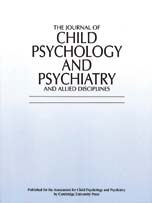Routine Monitoring of the Effectiveness of Child Psychotherapy
Published online by Cambridge University Press: 01 October 1998
Abstract
Outcome studies of child psychotherapy have sometimes been categorized into two broad types of studies. Ideally, psychotherapy outcome investigators first conduct “efficacy studies”, where internal validity is at the forefront and where considerable control is exercised over and within the experimental design (Hoagwood, Hibbs, Brent, & Jensen, 1995). In efficacy studies, often: (a) specific inclusion and exclusion criteria will be defined in order to restrict the sample to children exhibiting only the specific behavioral/emotional problem area upon which the treatment focuses; (b) the sample will be randomly assigned to treatment and comparison groups; (c) in order to allow for assignment to a no-treatment control group, the sample will not be seeking treatment (i.e. not clinic-referred); and (d) the investigators will exercise a high degree of control over the intervention (e.g. spend several months training therapists who are hired specifically for the project, see, e.g., Lewinsohn, Clarke, Hops, & Andrews, 1990).
“Effectiveness studies” are conducted where the focus is more on external validity and generalizability. In contrast to efficacy studies, effectiveness studies generally: (a) take place in naturalistic settings, where the mental health treatment of children actually occurs (e.g. in clinics); (b) use heterogeneous samples that are actually seeking services; (c) involve practitioners rather than research therapists; and (d) allow therapists more control over the intervention (see, e.g., Weisz & Weiss, 1989).
Information
- Type
- Annotation
- Information
- The Journal of Child Psychology and Psychiatry and Allied Disciplines , Volume 39 , Issue 7 , October 1998 , pp. 943 - 950
- Copyright
- © 1998 Association for Child Psychology and Psychiatry
- 13
- Cited by

